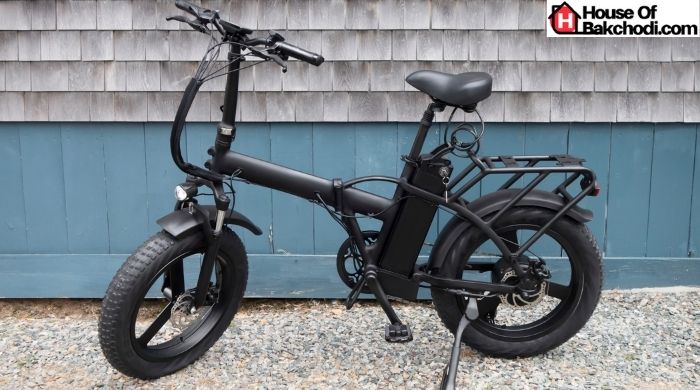Can Electric Bikes Go Uphill?
A common question for e-bike riders is “can electric bikes go uphill?” Do not worry anymore because the answer is YES! This article will cover essential points to ride your way uphill with your e-bike.
Page Contents
Important Features of Hill Climbing e-bikes:
1. Hub Motors
They are positioned at the center of the wheel and are most popular. They are affordable and more suitable for flatlands and light areas but not for climbing steep hills. They are not dependent on your input as they don’t use existing gearing but propels your e-bike directly.
2. Mid Drive Motors
They are appropriate for hilly commutes as they are more robust. These motors depend on your drivetrain for propulsion. They are ideal to ride with indirect power delivery as they have better center of gravity and a higher torque rate than hub motors.
3. Brakes
If you cycle uphill, you must think about cycling downhill as well. A good e bike will come along with perfect brakes.
4. Weight
Ideally a hill climbing e-bike must be lightweight. Regardless of the gear ratio, heavy e-bikes are difficult to pedal and their performance on hills is not up to the mark.
Motor, Speed and Performance of e-bikes:
A classification of 1,2 and 3 are adopted by states such as Washington as a method of regulating e-bikes.
Class 1
The bicycle is equipped with a motor and provides assistance while the rider is pedaling. When a speed of 20 miles per hour is reached, the motor stops providing assistance.
Class 2
These electric bikes consist of a throttle that can set the bike in motion up to a maximum speed of 20mph while the rider pedals. Beside that, it has the ability to gain 20 miles per hour speed with rider’s assistance even without the use of a throttle.
Class 3
Is a bike facilitated with a motor that provides assistance only while the rider is pedaling and stops to provide support when the bicycle reaches a 28 miles per hour speed.
It should be kept in mind that for all classes, the highest power output is 750 watts or 1 horse power.
Some Real-Life Speed Estimations While Riding Uphill With e-bikes
If a standard motor has a maximum power of 250W at 10 k/h, a rider who can contribute 250 watts irrespective of the speed can have a notable speed of 500W.
The rider can climb the following levels of hill at the given levels of speed:
- At 10km/h: 17.5% hill (combined power of 500 W)
- At 8 km/h: 17.5% hill (80% motor efficiency, i.e. 200W and 250W from rider)
- At 6 km/h: 17.5% hill (60% motor efficiency, i.e. 125W and 250W from rider)
Although it may seem like motor efficiency is decreasing with speed but in reality, the rider can still climb up the steep hill. Rider’s input is an important factor to solve this dilemma.
Without the rider pedaling at all and 500W coming solely from the motor, the following levels of hill can be climbed:
- At 10km/h: 17.5% hill (0 watt from rider, 100% motor efficiency, i.e. 500W)
- At 8 km/h: 17.0 % hill (80% motor efficiency, i.e. 400W and 0W from rider)
- At 6 km/h: 14.5% hill (50% motor efficiency, i.e. 250W and 0W from rider)
An e-bike is different from a regular bike because rider power becomes bigger as the speed decreases due to falling motor efficiency. Thus, using a not through gear system is not a plain answer in this scenario. The main thing to keep in consideration is speed rather than thinking that a motor that uses the gears is better. In doing so, the motor without the gears will be a better option. However, for an above 250W motor, the mentioned opinion maybe be invalid.
The Right Bike Climbing Techniques
1. Body Posture
Your body posture depends on the type of terrain and the steepness of the hill you’re climbing. Shift your body weight in front to maintain traction on the rear wheels while going uphill on steeper grades. This also prevents the front wheel from popping up. For better balance bend your elbows and lower your chest to the bars. E bikes have high boost of power, so it is vital to keep traction on rear wheels. Switching to lower support modes is wise when added boost of power is too much as it will increase traction and keep you connected with the trail.
2. Pedaling Cadence and Line Choice
It’s important to look at least 5 meters ahead to make the correct choice of line while riding trails and to keep correct pedaling cadence. While climbing uphill, whether you are using the best electric scooter or the best electric bike, it is not possible for you to stop pedaling and lose the momentum. So, it wise to check out your way beforehand.
3. Right Tire Pressure
Tire air pressure has to be relative to the type of terrain you are riding and your riding style as tires provide proper traction.
So, with the right kind of e-bike, speed and proper choice of hill climbing techniques, you’ll be thrilled to ride your way uphill and never again question the ability of an e-bike to climb uphill.




